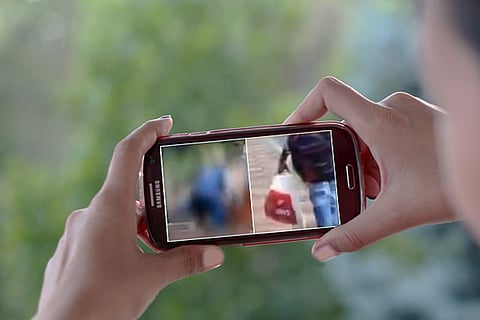

by Geeta Seshu
The horrific video of a drunk man raping a mentally disabled woman in a street in Visakhapatnam, has gone viral and there is much outrage on social media about the rise in violence against women in society and the man’s insouciance in broad daylight in full view of passersby.
Much of the anger is also about the insensitivity and callousness of the passersby who appear to have made no attempt to stop it. But what about the very act of shooting the video of the rape? What does it say about people who are witnessing a clearly criminal act and can only exercise the very slender power of shooting a video rather than the more crucial power to stop it?
Social media commentators have been divided in condemning and commending the auto driver, R G Srinu, for shooting the video and reporting it to the police. The latter feel that his video provided some evidence of the act and helped police to nab the alleged rapist, identified as a history sheeter, Ganji Siva. Others have asked whether he could not have actively stopped the man or sought the help of the passersby to stop him.
According to this report, the auto driver was not the only person who shot a video, though he took the step of turning it over to the police. So there were others, who also shot the video. Who were these bystanders and why didn’t they stop the man?
In an increasingly mediatized world, their act of witnessing, recording and sharing a crime would make them voyeurs, perhaps also purveyors of violence porn. Of course, they aren’t the only ones. This is just the latest in a growing list of videos of violence – of dalit youth being stripped and beaten in a police station, of lynch mobs attacking Muslims, or of students being slapped and whipped by teachers.
While these are clearly of mob or institutional violence, the individualized acts of violence are really at one end of the continuum of violence. So also the responsibility of the spectator who witnesses and records the violence.
In 1964, after the murder of a young woman, Kitty Genovese, in New York, social psychologists began studying what was termed the ‘bystander effect’. Genovese was attacked at around 3 am and screamed for help. Several neighbours heard her cries for help but no one came to her aid. She is reported to have staggered towards the back door of her apartment building and collapsed. Her attacker returned ten minutes later, attacked and raped her and left her dead.
Closer home, another horrific attack of a mentally disabled woman in a moving local train in Mumbai in 2002, was reported in the Times of India. What set it apart from the numerous reports of sexual violence was the somewhat shame-faced admission by the reporter that the rape took place in his presence and that he, and other commuters, did nothing to stop it.
The publication of the report caused a furore as journalists debated whether it was sensationalist and voyeuristic but more than anything else, it also raised questions about the role of citizens in being silent witnesses of crime and therefore, being complicit in it.
Social psychologists have surmised that witnesses to crime do not intervene to stop it due to a complex interplay of apathy and what John Darley and Bibb Latane (the psychologists who studied the ‘bystander effect’) called the ‘diffusion of responsibility’. The more witnesses there are, the less they feel responsible to help or get involved. Each looks to the other to take the first step and even if they do feel disgust or anger or even empathy, they are still waiting for someone else to express it.
Darley and Laten broke the responses down to three simple aspects : whether or not bystanders felt the person affected deserved help; whether they felt competent to offer help and whether there was any relationship between the bystander and the victim.
Given the prevalent indifference in society towards violence against women, is it any wonder that people can walk away without caring enough to get involved?
But it still begs the question: what of those who shot the video? They didn’t walk away, they stayed at the site of the crime and they recorded it. In a very weird way, they showed some responsibility and involvement with the crime. They may have provided evidence of it to investigating authorities. In disseminating it, one could argue they may have been able to raise awareness of the crime after it was committed
But while they witnessed it as it happened, they did nothing to stop it.
As Debord said (The society of the Spectacle, 1967), the ‘spectacle is a social relation among people, mediated by images’. The spectacle is the opposite of dialogue, the opposite of action. And, in this scenario, aren’t those who shot the video of the crime, also abettors to it?
Geeta Seshu is an independent journalist and Contributing Editor of the mediawatch site The Hoot. She is based in Mumbai.
Views expressed are the author's own.